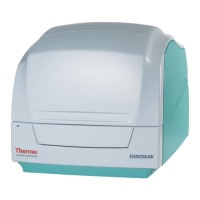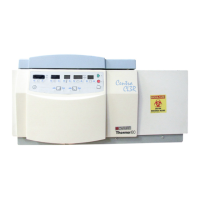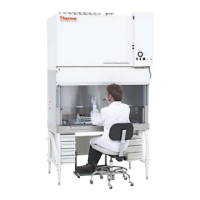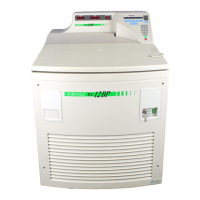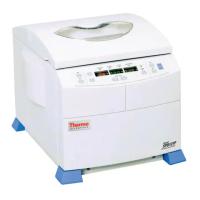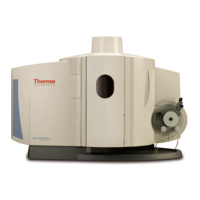1
Introduction
LC/MS Functional Block Diagram
4 Orbitrap Fusion Series Hardware Manual Thermo Scientific
Ionization of the sample takes place in the API source. The specific method used to ionize the
sample is referred to as the ionization technique. The ion optics transmit the ions produced in
the API source into the user-specified mass analyzer, where the mass-to-charge ratios (of the
ions produced in the API source) are determined. The polarity of the electric potentials
applied to the API source and ion optics determines whether positively charged ions or
negatively charged ions are transmitted to the designated mass analyzer. You can set up data
acquisition methods for the mass spectrometer to analyze positively or negatively charged ions
or to switch between these polarity modes during a single run.
Certain lenses in the API source and ion optics act as gates to start and stop the transmission
of ions from the API source to a mass analyzer. An Automatic Gain Control™ (AGC) process
controls the function of these lenses and sets them to transmit the optimum number of ions to
the mass analyzer.
The data system serves as the user interface to the mass spectrometer, autosampler, LC pump,
and syringe pump. Refer to the Xcalibur Help for more information about the Orbitrap
Fusion Series data processing and instrument control application.
Each sequence of loading a mass analyzer with ions followed by mass analysis of the ions is
called a scan. The mass spectrometer uses several different scan mode and scan type
combinations to load, fragment, and detect ions. The ability to vary not only the ionization
and ion polarity modes, but the scan mode and scan type, provides greater flexibility in the
instrumentation for solving complex analytical problems.
For information about the H-ESI, APCI, and APPI techniques, refer to the Ion Max NG and
EASY-Max NG Ion Sources User Guide. For information about the nanoelectrospray ionization
(nanoESI or NSI) technique, refer to the manual that came with your NSI source.
LC/MS Functional Block Diagram
Figure 1 shows a functional block diagram of the Orbitrap Fusion Series system with
hyperlinks to the applicable sections. A sample transfer line connects the LC to the mass
spectrometer. The LC instrument or modules are usually installed on the left side of the mass
spectrometer. A dedicated holder that sits on top of the mass spectrometer contains the
syringe pump and divert/inject valve.
In a typical analysis by LC/MS, a sample is injected onto an LC column. The sample then
separates into its various components. The components elute from the LC column and pass
into the mass spectrometer for analysis.
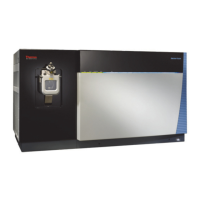
